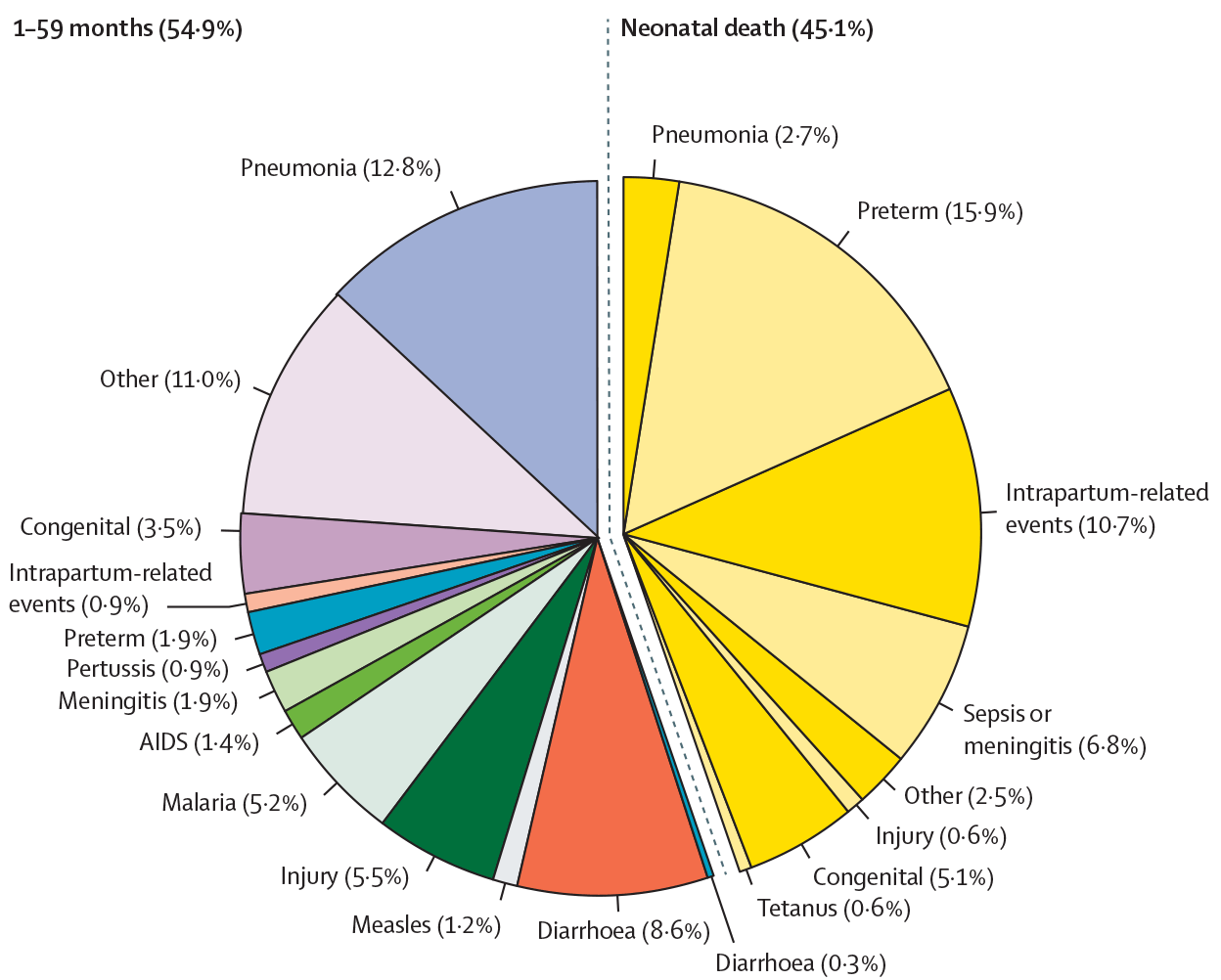Global Progress on Reducing Child Deaths Largely Due to Fewer of Main Infectious Diseases and Deaths during Birth

Researchers at the Johns Hopkins Bloomberg School of Public Health published the most up-to-date causes of deaths estimates among children under five at global, regional and country-level between 2000 and 2015.
The study, published in The Lancet, found that in 2015, 5.9 million children worldwide died before reaching the age of five, including 2.7 million newborns. Globally, 4 million fewer child deaths occurred in 2015 than in 2000, mainly thanks to reductions in deaths from pneumonia, diarrhea, malaria, deaths during birth and measles. However, progress on reducing newborn deaths (deaths occurred in the first 28 days after birth) has been slower, meaning that as a whole, the world failed to reach the Millennium Development Goal (MDG) target of reducing child deaths by two-thirds between 1990 and 2015. Countries are advised to prioritize child survival policy and programs based on their child cause-of-death composition to achieve the Sustainable Development Goals (SDG) child survival target.
Key findings
- Globally in 2015, the leading causes of death for children under five years old were complications due to premature birth (17.8%, 1.1 million deaths), pneumonia (15.5%, 0.9 million deaths) and (11.6%, 0.7 million deaths).
- Inequality in child deaths were seen around the world with the national rates of child death ranging from 1.9 to 155.1 deaths per 1000 births, and 60.4% (3.6 million) of all deaths occurring in 10 countries clustered in sub-Saharan Africa and southern Asia.
- Countries with the highest rates of child death (100 or more deaths per 1000 births) include Angola, Central African Republic, Chad, Mali, Nigeria, Sierra Leone and Somalia. In these countries pneumonia, malaria and diarrhea were the leading causes of death. To improve survival in these regions the researchers recommended improving the uptake of breastfeeding, providing vaccines for pneumonia, malaria and diarrhea, and improving water and sanitation.
- In countries with the lowest rate of child death (less than 10 per 1000 births), the leading causes of death include congenital abnormalities, complications due to premature birth and injuries. Improved detection and surgery for congenital abnormalities, better medical care during pregnancy and childbirth, and more research on effectiveness of injury interventions could help improve survival in these countries.
Global, regional, and national causes of under-5 mortality in 2000–15: an updated systematic analysis with implications for the Sustainable Development Goals, was written by Li Liu, Shefali Oza, Dan Hogan, Yue Chu, Jamie Perin, Jun Zhu, Joy Lawn, Simon Cousens, Colin Mathers, Robert E Black and was published online on The Lancet, November 10, 2016.
Contact for the Department of International Health: Brandon Howard at 410-502-9059 or brandonhoward@jhu.edu
